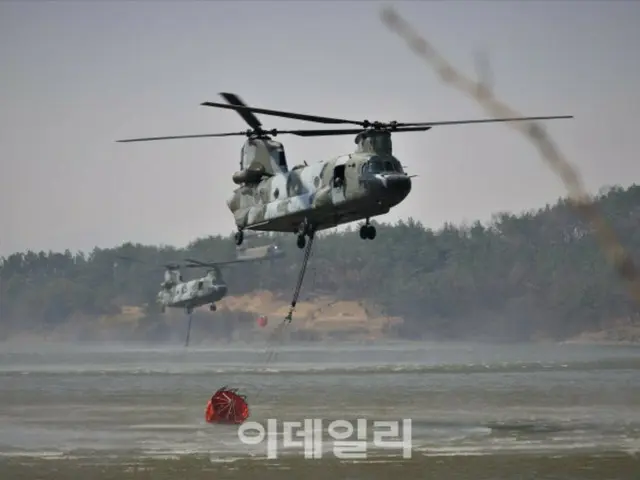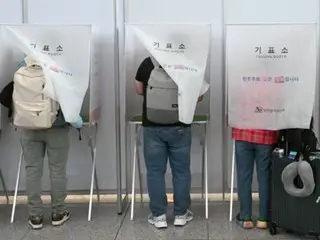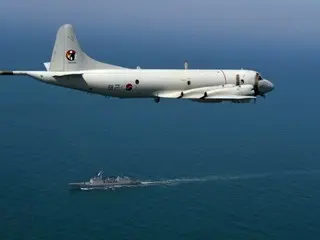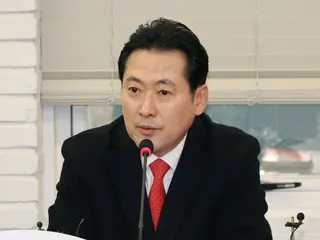Yoo Young-Won, a lawmaker from the People's Power Party, pointed out on the 28th that there are limitations to the conventional response methods for the forest fires that have broken out in multiple places.
He emphasized the urgency of considering the introduction of a fire suppression system based on the use of fixed-wing aircraft, with an airborne fire suppression system linked to Air Force transport aircraft (C-130 and C-390).
South Korea has responded to forest fires mainly with HYERI. However, most HYERI can only transport 1,000 to 3,000 liters of water at a time, making it difficult to transport large-scale forest fires.
The drones are not powerful enough to put out fires. In addition, flight conditions such as nighttime, fog, smoke, and strong winds make it virtually impossible to put out fires.
They also tried to use the HYERI to fight the fires at the scene of a forest fire in the city of Uiseong, North Gyeongsang Province, but were unable to take off due to thick fog and smoke.
There was an accident where a plane crashed into a power line. The usage of HYERI is also poor. The main plane owned by the Forestry Agency, the KA-32 (3000 liter class), was destroyed due to the effects of the Russia-Ukraine war.
Parts supply has been cut off, leaving eight of the 29 machines out of service. In addition, in the case of the large HYERIS-64, only five of the seven are in operation. Of the total 50 machines, seven are models with a capacity of over 5,000 liters, and 10 are models with a capacity of over 5,000 liters.
There are 32 HYERIs in the 00-5,000 liter to 5,000-liter classes, and only 11 in the 1,000-liter class. Due to maintenance issues, only an average of 25 to 30 HYERIs are actually available per day.
For this reason, the Forestry Agency has requested that the Air Force use its C130 transport aircraft for firefighting operations. The Air Force has also considered this plan, but has been reluctant to do so due to operational and safety issues.
The realization of the aerial fire suppression system has been delayed due to problems with the airborne fire suppression system. The aerial fire suppression system is a fixed-wing-based modular forest fire suppression system that has been introduced by the U.S. Forest Service and 14 other countries around the world.
No modifications are required and it can be installed in the cargo bay inside a C-130 transport aircraft. It can drop about 11,000 to 13,000 liters of water in just five seconds while flying at high speed and low altitude, and has a width of 2.5m.
It can form a firebreak line of up to 400 meters long and 100 meters wide. After completing its mission, it can return to base and be deployed again within about 20 to 30 minutes. This is effective in preventing the spread of early wildfires.
This means that firefighting operations can be repeated over a wide area by blocking off the fire. In addition, the transport aircraft can operate day and night, eliminating gaps in nighttime firefighting operations.
Regarding the aerial fire suppression system, Rep. Yoo said, "Normally, it can perform its original mission as a transport aircraft, but in the event of a disaster such as a forest fire, it can quickly switch to a fire suppression platform.
"This has great advantages in terms of equipment operation efficiency and budget savings," he said, adding, "Considering the large-scale forest fires that occur every year and the scale of damage they cause,
"Now is the time for more active review and discussion on practical implementation," he emphasized. The introduction of an aerial fire suppression system will cost 8 billion won (about 815 million yen) to 100,000 yen per set.
The system is estimated to cost 10 billion won (approximately 1.02 billion yen). This is relatively inexpensive compared to the 35 billion won (approximately 3.56 billion yen) of a single super-large HYERI. The system is also expected to be used in the construction of mountain
It can be used not only to put out fires, but also to respond to a variety of disasters, such as spraying oil dispersants in the event of an oil spill at sea.
Currently, the South Korean Air Force is planning to acquire three Brazilian-made C-390 large transport aircraft.
The aircraft has a larger interior space and carrying capacity than the conventional C-130 transport aircraft, which is expected to make it easier to install an aerial fire suppression system.
The system has also received technical certification for being able to be installed on transport aircraft. It also has a greater ability to carry fire extinguishing agents.
"If we operate it in parallel with the -130 transport aircraft, our response capability to forest fires will be further improved," he said. "This is not just about introducing equipment, but is about protecting the lives and safety of the people, and it is a realistic goal."
It is a very effective response tool," he said.
2025/03/29 07:23 KST
Copyrights(C) Edaily wowkorea.jp 107
















